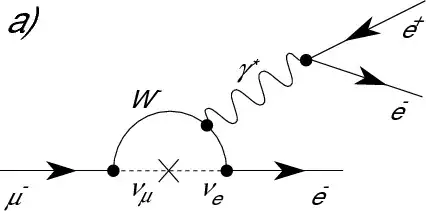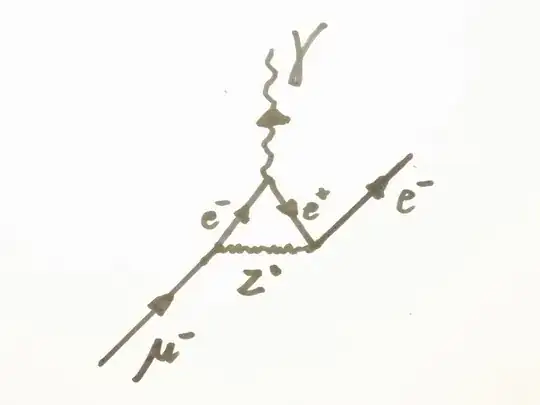Let me state first that I don't think this is a duplicate of the mentioned question, though the basic thought is the same. Nevertheless, I come up with the prequark rishon theory of Harari, which accounts for all interactions, and not with a muon that consists of an electron and two neutrinos. In the first answer to the abovementioned question, it is confirmed that muons (or quarks and leptons in general) could actually have a substructure. To reveal the substructure of leptons you could smash them together at very high energies (because it is known they exhibit no substructure if we probe them above a very little distance). I don't know if such experiments are done because in the framework of the standard model there is no need for them: it describes leptons (and quarks) as elementary, so why look for substructure if they are considered not as a composite?
A muon (${\mu}^-$) changing into an electron ($e^-$) and a photon ($\gamma$), has never been observed in Nature (or maybe it's better to say " in particle accelerators"). To explain this, physicists assumed that there are two kinds of neutrinos: one associated with the electron (${\nu}_e$) and one associated with the muon (${\nu}_{\mu}$). They assigned a "muon number" $+1$ to the muon and its associated neutrino (and a value $-1$ to their anti-particles), and an "electron number" $-1$ to the electron and its associated neutrino (and value $+1$ to their anti-particles). These numbers had to be equal for the original particle and the particle into which it changes.
So a ${\mu}^-$ changing into a $e^-$ and a $\gamma$ (which obviously has lepton number $0$) won't occur because the muon number (and the electron number) has to be conserved (you can say it's an extension of the conservation of lepton number), which obviously isn't the case.
On the other hand, a ${\mu}^-$ can change into a $e^-$, a ${\bar{\nu}}_e$ and a ${\nu}_{\mu}$, which you can check by inspecting the (additive) muon and electron numbers for the particles.
With this rule (conservation of electron number and muon number, to which we can nowadays add a tau number) you can predict which changes can take place.
But is this really a explanation why the ${\mu}^-$ can't change into a $e^-$ and a $\gamma$?
I suppose not, so what is the conventional, deeper explanation (in the framework of the standard model) that this change can't take place?
And can't we just as well say that the $\mu^-$ is composed of three particles which each carry an electric charge (amongst other kinds of charge) of $-{\frac 1 3}$, so, because of the repulsive force of these charges, the ${\mu}^-$ can't change into $e^-$ because in a $e^-$ the three charges are closer to each other (which would require the absorption of a photon)?

